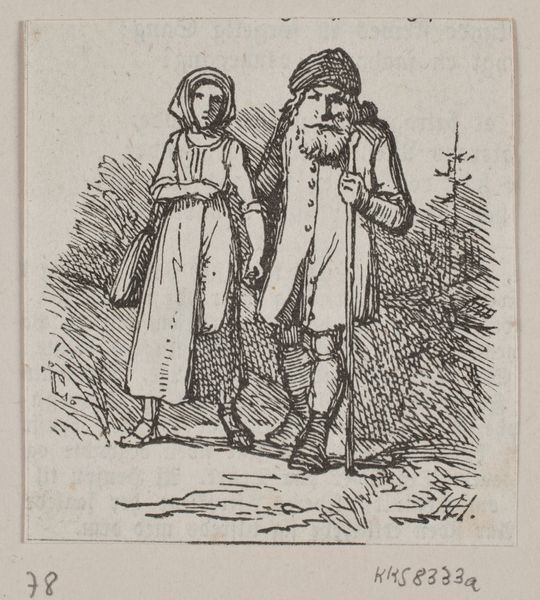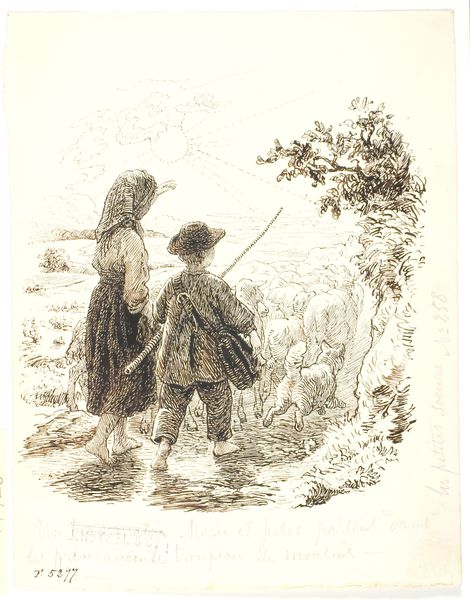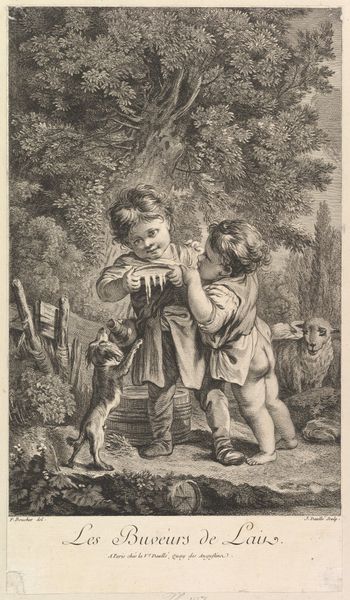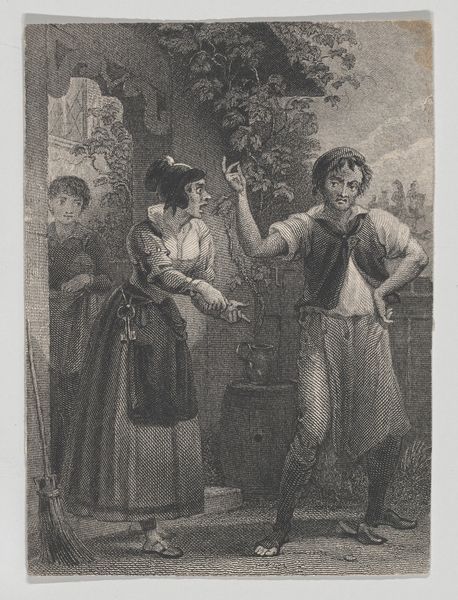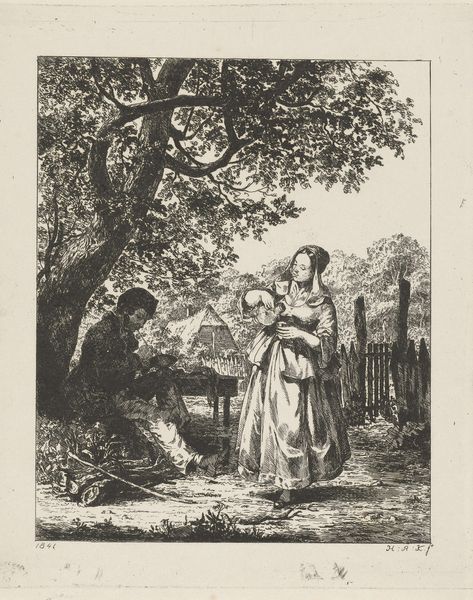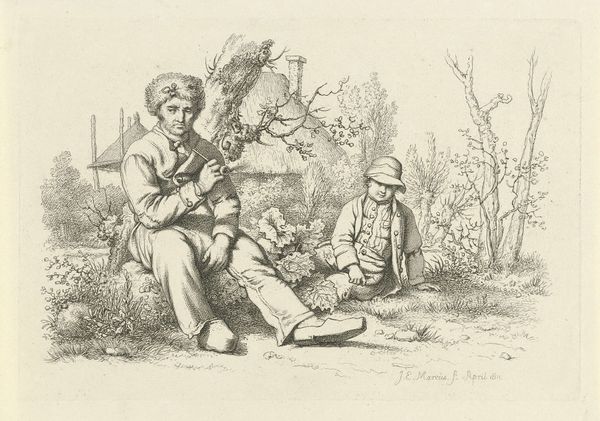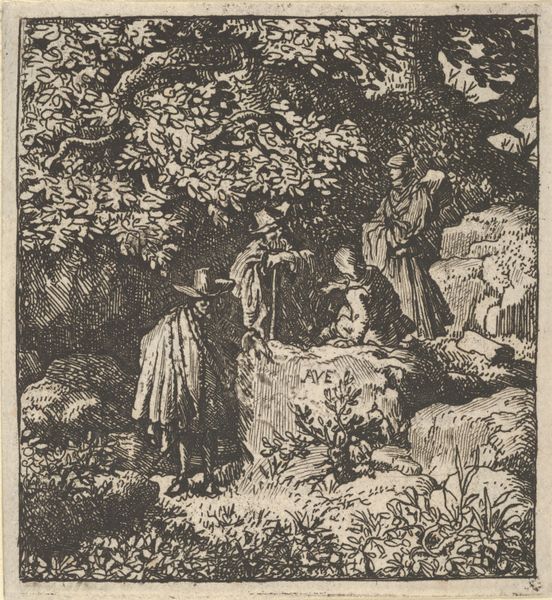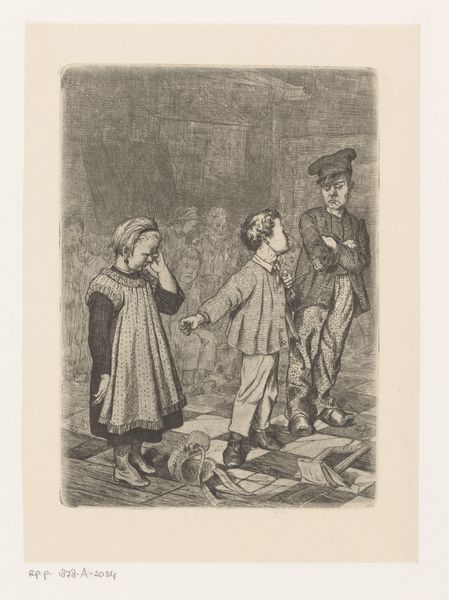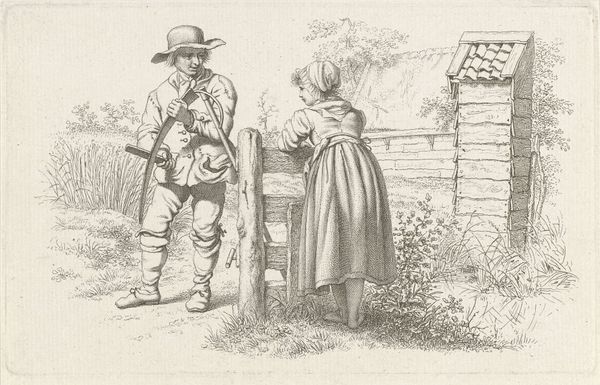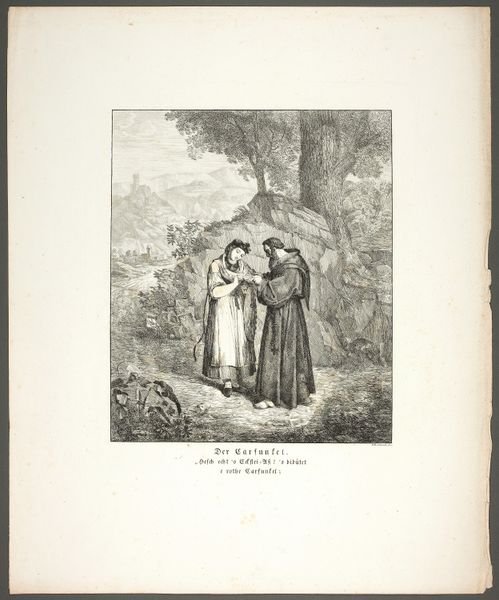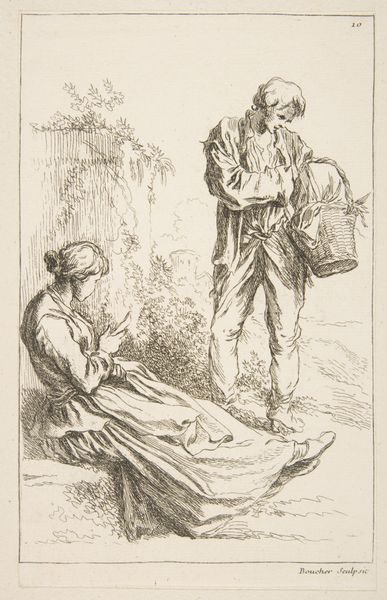
Illustration til "Ib og lille Christine" i H.C. Andersen, "Eventyr og Historier", Bind 2 1870 - 1873
0:00
0:00
drawing, print, engraving
#
drawing
#
narrative-art
# print
#
genre-painting
#
engraving
Dimensions: 132 mm (height) x 96 mm (width) (bladmaal)
H.P. Hansen made this illustration for Hans Christian Andersen’s fairy tale "Ib and Little Christine" using engraving, a printmaking technique reliant on manual skill and industrial processes. The image is made by cutting lines into a metal plate, which is then inked and printed. Look closely, and you’ll notice the whole scene is built up from a dense network of such lines. The varying thickness and density create tone and volume, from the old woman's heavy cloak to the delicate foliage in the background. This painstaking work contrasts with the mass production of books. Engraving demands highly skilled labor, yet its purpose here is to illustrate a popular story for a wide audience. This brings up the complex relationship between craft, art, and commerce in the 19th century. Consider how the texture and tone created by the engraving process shapes our experience of the story and characters. This image reminds us that every work of art is born of specific materials and processes, embedded in a particular time and place.
Comments
No comments
Be the first to comment and join the conversation on the ultimate creative platform.
